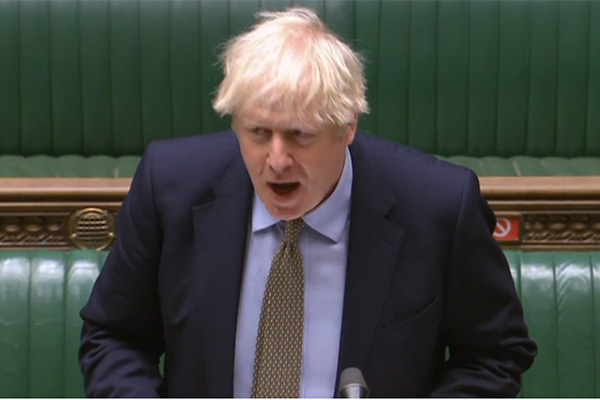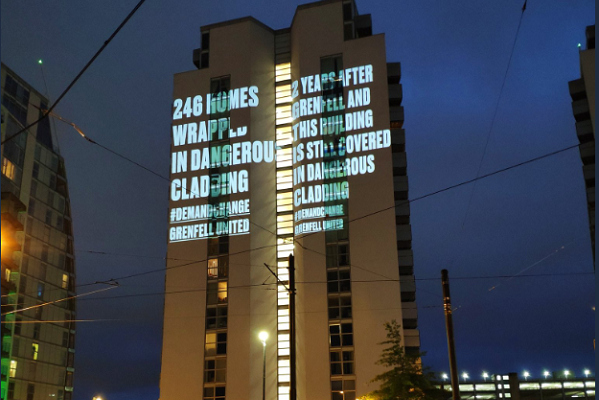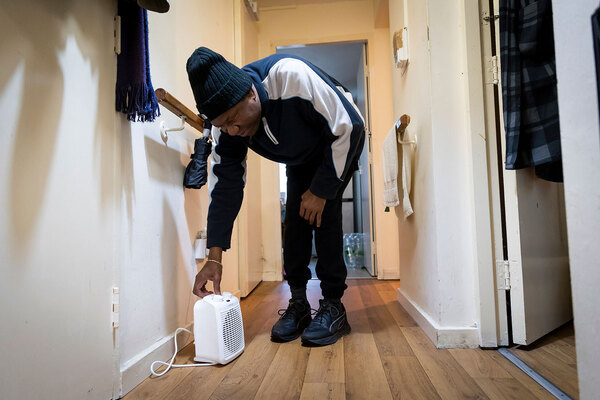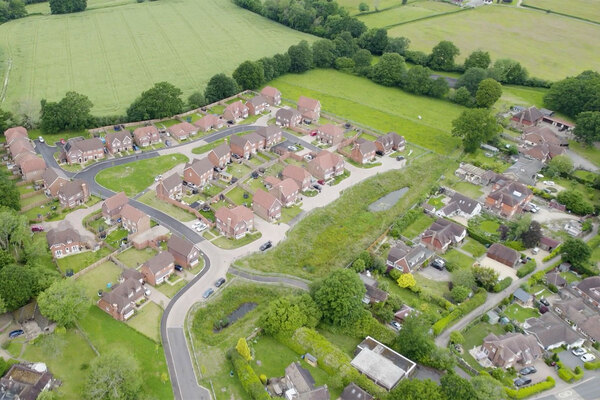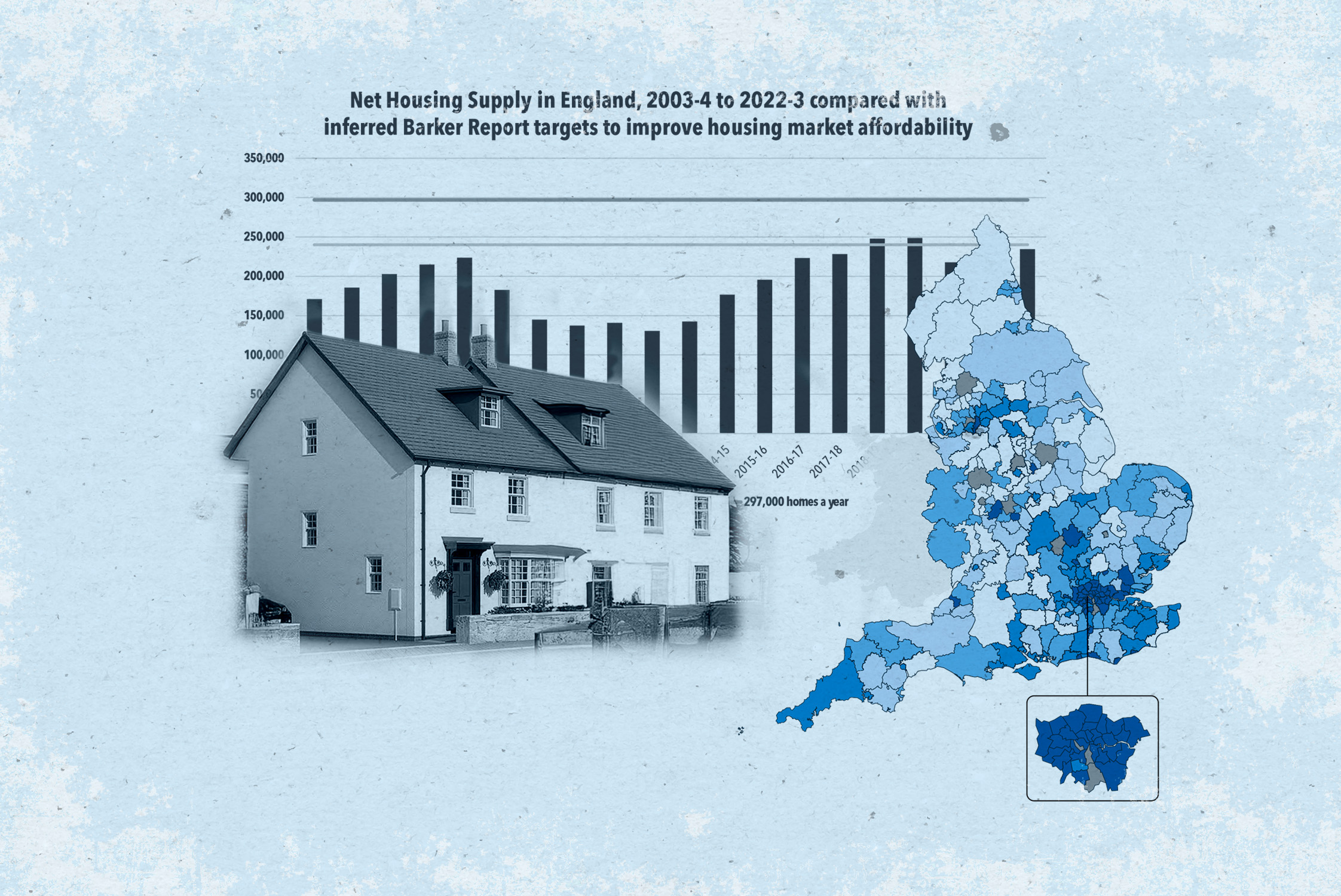Boris Johnson hints at help for leaseholders in buildings under 18m hit by cladding issues
The Royal Institution of Chartered Surveyors (RICS) is drawing up a new ‘risk matrix’ to help leaseholders unable to sell flats in blocks shorter than 18m with potentially dangerous cladding, the prime minister has said.
Speaking during prime minister’s questions today, Boris Johnson said the matrix was being drawn up to support mortgage valuation, while the National Fire Chiefs Council (NFCC) was also creating “a risk prioritisation” tool for these buildings.
Responding to a question by Hendon MP Matthew Offord about whether the government would provide specific advice on risk prioritisation for buildings less than 18m tall, Mr Johnson said: “What I can tell him is we are focusing first on buildings over 18m with unsafe cladding, but I understand that the RICS is producing a risk matrix to support mortgage valuation under 18m, and led by NFCC, a risk prioritisation tool for blocks of flats will be available shortly.”
Inside Housing has asked RICS and the NFCC for information about how the tool and matrix might work in practice, and when we could see them both being applied.
A RICS spokesperson said: “We are working on a review of EWS1 and guidance generally with a range of industry stakeholders.
"Any changes made as a result of that review will still have to follow the most up to date government advice.”
Thousands of people living in blocks less than 18m tall are currently unable to sell their homes because banks won’t offer mortgages to potential buyers until a qualified engineer has inspected the block’s cladding materials and given it a clean bill of health through an EWS1 form.
RICS created the form in December to help unstick the market. The form was initially supposed to be only for buildings taller than 18m but mortgage providers are now asking for them for buildings under 18m, following government advice in January that called on building owners to assess and manage the risk of external fire spread regardless of height.
Inside Housing has spoken to leaseholders in blocks as small as 9m whose banks have asked them for EWS1 forms when they have tried to sell their properties.
Later during prime minister’s questions, Dulwich and West Norwood MP Helen Hayes told parliament about a constituent who is a shared owner and has terminal cancer but cannot move closer to his family because of the EWS1 crisis. She asked the prime minister when he would end this and similar “scandals”.
Mr Johnson said: “I direct my honourable friend to what I said a moment or two again about trying to provide mortgage backing to people who find themselves in that very difficult position. But we must get on and remove the cladding, the flammable cladding, from buildings of all kinds.”
Commenting on the new risk tool, a spokesperson for the National Fire Chiefs Council said: "We have been working closely with Government, along with a number of other fire safety stakeholders, on the effective implementation of the Fire Safety Bill through a task and finish group.
"Through that collaborative work a risk-prioritisation tool has been developed, which looks to assigns a risk level to each individual building to allow responsible persons to prioritise their fire risk assessments when evaluating external wall systems.
"The work RICS have done to support mortgage valuation is for valuers and these two pieces of work should not be used together as they are looking at risk from different perspectives. As the minister set out during second reading of the Bill in the Lords earlier this month, the Home Office is considering the advice provided by the group and will look to set out its position during the committee Stage."
1. The government must lead an urgent national effort to remove all dangerous cladding from buildings by June 2022, including the prioritisation of blocks most at risk
Since the fire at Grenfell Tower more than three years ago, the government has adopted a ‘hands-off’ approach to the remediation of other buildings with dangerous cladding and insisted that making properties safe is the responsibility of building owners.
But three years on, in the face of slow progress and a mounting number of buildings requiring work, it is time for the government to recognise that only a national effort can solve this problem.
It is not right that buildings with minor defects are remediated before those with seriously dangerous cladding systems and we know enough about the risks now to make judgements about the buildings which pose the most risk.
The government must take the responsibility for finding these towers and making them safe before another disaster strikes.
